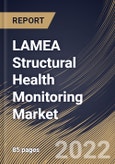In the realm of construction management and maintenance, structural health monitoring for civil constructions is gaining prominence across the world. SHM decreases inspection expenses and research time while also allowing for a better understanding of the behavior of structures under impact loading and seismic protection using real-time or near-real-time data. SHM of civil structures allows for improved post-earthquake management and aids in rescue efforts. However, due to the deleterious impacts of structural reactions, structural monitoring of static or dynamic stress of dams has received a lot of attention in recent years.
Furthermore, due to a variety of climatic and other load factors, the actual structural reactions of dams deviate from the baseline values estimated during design. These variances are predicted to occur based on the kind of construction, structural modelling assumptions, and analyses and discrepancies between the proposed design and the completed structure.
The beautiful skyscrapers like the Burj Khalifa have been made feasible thanks to scientific developments in the fields of civil engineering and geotechnical engineering. Dams, skyscrapers, tunnels, power plants, and other huge constructions have been erected to make life simpler for humans. However, even modest structural failures can result in the loss of property and also human life.
As a result, structural health monitoring should be done on a regular basis. The structural health monitoring market is being driven by several infrastructure businesses, governments, and maritime and air traffic agencies implementing structural health monitoring technologies to lower the costs of infrastructural maintenance. Additionally, the entire structural health monitoring market is being driven by the adoption of new technologies and economic expansion of emerging nations in the Middle East and Africa.
The Brazil market dominated the LAMEA Structural Health Monitoring Market by Country 2020, and is expected to continue to be a dominant market till 2027; thereby, achieving a market value of $67.6 million by 2027. The Argentina market is poised to grow at a CAGR of 18.5% during (2021 - 2027). Additionally, The UAE market is expected to showcase a CAGR of 17.6% during (2021 - 2027).
Based on Technology, the market is segmented into Wired and Wireless. Based on End Use, the market is segmented into Civil Infrastructure, Aerospace & Defense, Energy, Mining, and Others. Based on Offering, the market is segmented into Hardware and Software & Services. Based on Hardware Type, the market is segmented into Sensors, Data Acquisition Systems (DAS) & Communication Systems and Others. Based on countries, the market is segmented into Brazil, Argentina, UAE, Saudi Arabia, South Africa, Nigeria, and Rest of LAMEA.
The market research report covers the analysis of key stake holders of the market. Key companies profiled in the report include Acellent Technologies, Inc., Sixense, Nova Ventures Group Corp., Structural Monitoring System Plc., Digitexx Data Systems, Inc., SGS S.A, Campbell Scientific, Inc., COWI A/S, GEOKON, and Geocomp Corporation.
Scope of the Study
Market Segments Covered in the Report:
By Technology
- Wired and
- Wireless
By End Use
- Civil Infrastructure
- Aerospace & Defense
- Energy
- Mining, and
- Others
By Offering
- Hardware and
- Software & Services
By Hardware Type
- Sensors
- Data Acquisition Systems (DAS) & Communication Systems
- Others
By Country: Brazil, Argentina, UAE, Saudi Arabia, South Africa, Nigeria, and Rest of LAMEA.
Key Market Players
List of Companies Profiled in the Report:
- Acellent Technologies, Inc.
- Sixense
- Nova Ventures Group Corp.
- Structural Monitoring System Plc.
- Digitexx Data Systems, Inc.
- SGS S.A.
- Campbell Scientific, Inc.
- COWI A/S
- GEOKON
- Geocomp Corporation
Unique Offerings from the Publisher
- Exhaustive coverage
- The highest number of market tables and figures
- Subscription-based model available
- Guaranteed best price
- Assured post sales research support with 10% customization free
Table of Contents
Companies Mentioned
- Acellent Technologies, Inc.
- Sixense
- Nova Ventures Group Corp.
- Structural Monitoring System Plc.
- Digitexx Data Systems, Inc.
- SGS S.A.
- Campbell Scientific, Inc.
- COWI A/S
- GEOKON
- Geocomp Corporation








